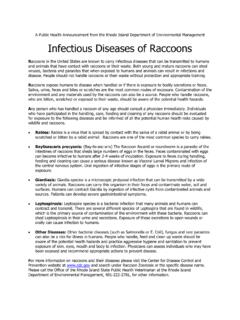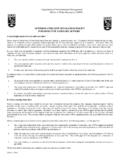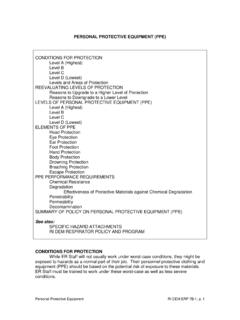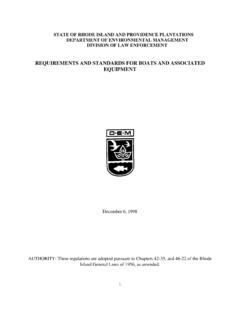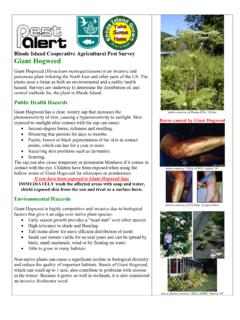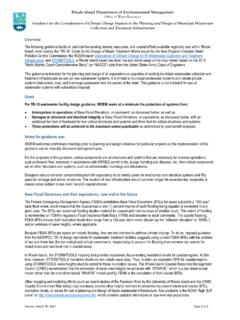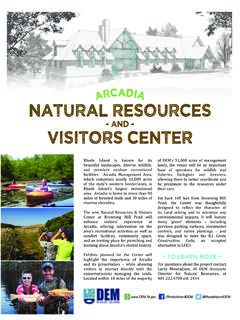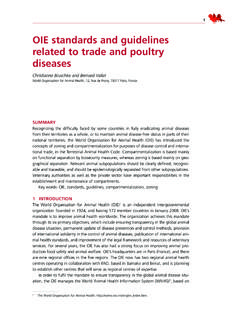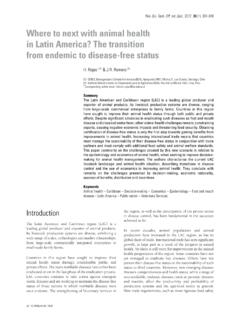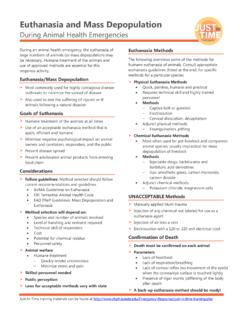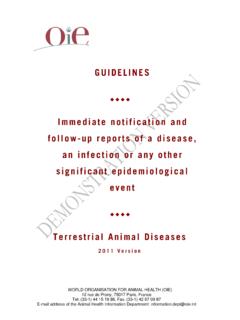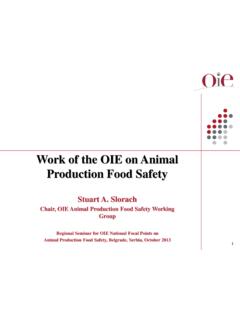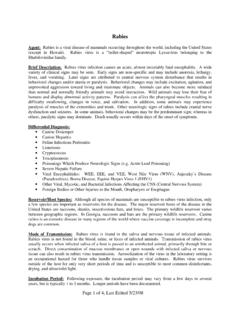Transcription of Zoos: Foot-and-Mouth Disease And Other Highly …
1 1 3/07/02 (First Draft) National animal Health Emergency Management System guidelines Department of Agriculture 2003 Facilities guidelines zoos : Foot-and-Mouth Disease And Other Highly Contagious Diseases Prepared by American Association of Zoo Veterinarians And American Zoo and Aquarium Association The National animal Health Emergency Management System guidelines provide an operational framework for use in dealing with an animal health emergency in the United States zoos 3/07/02 2 Disclaimer Statement These guidelines are under ongoing
2 Review. Please send questions or comments to: Emergency Programs Veterinary Services animal and Plant Health Inspection Service Department of Agriculture 4700 River Road, Unit 41 Riverdale, Maryland 20737-1231 Telephone: (301) 734-8073 Fax: (301) 734-7817 E-mail: These guidelines are designed to facilitate diagnosis and control of exotic animal diseases. Scientifically and technically, they represent the most recent and appropriate concepts available. However, they do not reflect current policies of the Department of Agriculture (USDA), animal and Plant Health Inspection Service (APHIS), Veterinary Services (VS).
3 Some of these procedures may also differ with prevailing local, State, and Federal laws and regulations. Requirements frequently change, especially in areas of waste disposal and environmental protection. APHIS animal emergency Disease control programs must be conducted in compliance with applicable Federal, State, and local laws. Before these guidelines are implemented, APHIS personnel will confer with appropriate officials and modify the guidelines as necessary to ensure they are compatible with applicable legal requirements. Every effort is made to provide accurate and useful information. However, the Government, USDA, APHIS, the American Association of Zoo Veterinarians (AAZV), the American Zoo and Aquarium Association (AZA), and their employees and contractors assume no legal liability for the accuracy, completeness, or usefulness of any information, apparatus, product, or process disclosed herein.
4 Neither the Government, USDA, APHIS, AAZV, AZA, nor their employees and contractors makes any warranty, express or implied, including the warranties of merchantability and fitness for a particular purpose with respect to documents or information available in these guidelines . All indirect, consequential, implied, punitive, and special damages are deemed waived if you use the seller s choice, replacement, or repair of the defective information. USDA prohibits discrimination in all its programs and activities on the basis of race, color, national origin, sex, religion, age, disability, political beliefs, sexual orientation, or marital or family status.
5 (Not all prohibited bases apply to all programs.) Persons with disabilities who require alternative means for communication of program information (Braille, large print, audio tape, etc.) should contact USDA s TARGET Center at (202) 720-2600 (voice and TDD). zoos 3/07/02 3 To file a complaint of discrimination, write to USDA, Director, Office of Civil Rights, Room 326-W, Whitten Building, 1400 Independence Avenue, SW, Washington, DC 20250-9410 or call (202) 720-5964 (voice or TDD).
6 USDA is an equal opportunity provider and employer. zoos 3/07/02 4 Preface This document represents the views of an ad hoc group of members from the AAZV and AZA, working in collaboration with USDA, APHIS, VS staff. The purpose of the Emergency guidelines for zoos is to provide information to the range of people who would be involved in managing an animal emergency Disease , like Foot-and-Mouth Disease (FMD), in zoos .
7 This document provides the USDA, APHIS, VS, Emergency Programs (EP) staff with the framework for decision-making in a situation in which an emergency Disease was to impact a zoo. In addition, these guidelines should serve as a set of operational procedures for AZA-accredited institutions in the event of an emergency Disease outbreak. Individual zoological institutions should incorporate the proposed strategies into routine procedures as well as develop additional specific plans for their facility. It is Highly recommended that institutions establish a working relationship and review their policies with the State and local officials that would be involved in an emergency Disease outbreak.
8 Emergency guidelines for zoos , a component of the APHIS National animal Health Emergency Management System (NAHEMS) guidelines , is designed for use in the event of an incursion of a foreign animal Disease (FAD) or FAD arthropod vector into the United States. This material provides operational guidelines to be used by any Emergency animal Disease Eradication Organization and integrated into the preparedness plans of Other Federal agencies, State and local Governmental agencies, and additional groups involved in animal health emergency management activities. The guidelines focus on: Disease eradication strategies and policies.
9 Field investigations. Operational procedures. Site-specific strategies for various types of facilities. Resource management. Educational resources. The guidelines provide a foundation for coordinated national, regional, State, and local response activities in an emergency situation. As such, it is meant to compliment, rather than substitute for, non-Federal preparedness activities. This resource is being reviewed and updated on an ongoing basis, and comments and suggestions are welcome. zoos 3/07/02 5 Copies of the guidelines are available free of charge.
10 For a list of available publications, visit the APHIS home page ( ). To order, contact: Emergency Programs Veterinary Services animal and Plant Health Inspection Service Department of Agriculture 4700 River Road, Unit 41 Riverdale, Maryland 20732-1231 Telephone: (301) 734-8073 Fax: (301) 734-7817 E-mail: 3/07/02 6 Acknowledgments Emergency guidelines for zoos reflects the efforts of a number of individuals, including a Writing Group (see below)

